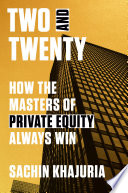

The book delves into the hedge fund industry, explaining how it operates under the 'two and twenty' compensation structure. This means that hedge fund managers typically charge a 2% management fee on the total assets under management and take 20% of the profits generated. This model incentivizes managers to maximize returns, but it also raises questions about the alignment of interests between managers and investors. The author discusses the implications of this model on investment strategies, risk management, and the overall performance of hedge funds. The book also examines the evolution of hedge funds, their role in financial markets, and the regulatory landscape that governs them.
Continue readingA significant portion of the book is dedicated to understanding investor behavior and psychology. The author emphasizes that emotions and cognitive biases can heavily influence investment decisions. By exploring concepts like herd behavior, loss aversion, and overconfidence, the book provides insights into why investors often make irrational choices. The author argues that recognizing these biases is crucial for both investors and fund managers to make more informed decisions and to develop strategies that mitigate emotional influences on investing.
Continue readingThe relationship between risk and reward is a central theme in 'Two and Twenty.' The author explains how hedge funds often employ various strategies to manage risk while seeking high returns. This includes diversification, leverage, and complex financial instruments. The book outlines the importance of understanding risk tolerance and the need for investors to align their investment choices with their risk appetite. Furthermore, the author discusses how different market conditions can affect risk and reward dynamics, urging investors to remain adaptable and informed.
Continue readingThe author explores how technology has transformed the investment landscape, particularly in the hedge fund industry. From algorithmic trading to data analytics, technology plays a critical role in enhancing decision-making processes and improving efficiency. The book discusses the rise of quantitative investing and the impact of big data on investment strategies. It also highlights the challenges and ethical considerations that come with relying heavily on technology, such as data privacy and the potential for systemic risks.
Continue readingThe regulatory landscape surrounding hedge funds is complex and constantly evolving. The book provides an overview of the key regulations that govern hedge funds, including the Dodd-Frank Act and the implications of the SEC's oversight. The author discusses the challenges hedge fund managers face in ensuring compliance while trying to maintain their competitive edge. This section emphasizes the importance of transparency and ethical practices in building trust with investors and the broader financial community.
Continue readingIn the final chapters, the author speculates on the future of hedge funds in light of changing market dynamics, investor preferences, and technological advancements. The book discusses emerging trends such as ESG (Environmental, Social, and Governance) investing and the increasing demand for sustainable investment strategies. The author argues that hedge funds must adapt to these trends to remain relevant and competitive in the evolving investment landscape.
Continue readingThe book concludes with practical advice on building and managing a successful hedge fund. This includes insights on fundraising, investor relations, and portfolio management. The author emphasizes the importance of a clear investment thesis, disciplined execution, and continuous learning. The final message encourages aspiring fund managers to cultivate a strong ethical foundation and to prioritize long-term success over short-term gains.
Continue reading